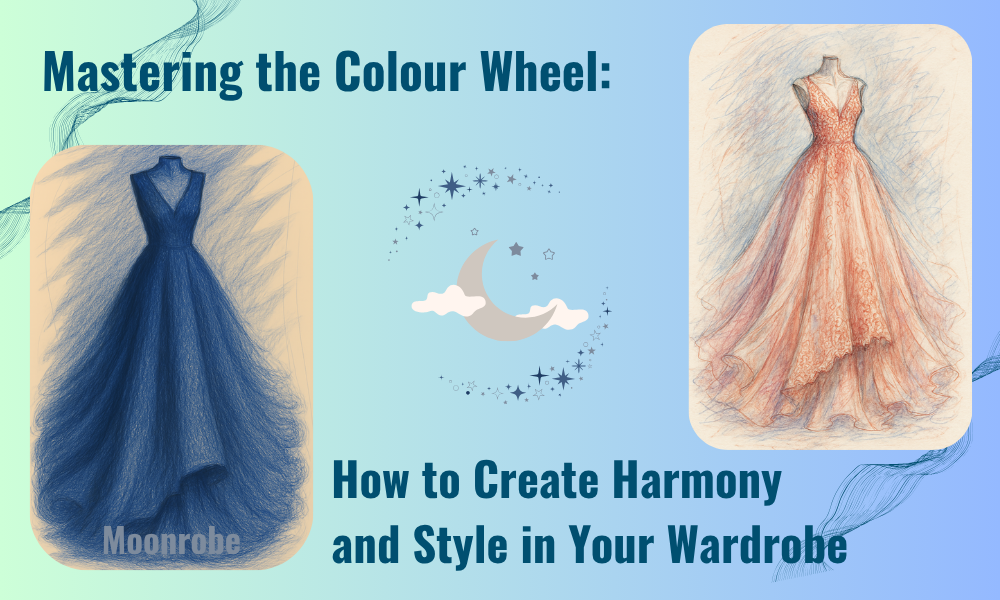Color is one of the most powerful tools in fashion—yet it's often overlooked. Whether you want to stand out, appear more refined, or simply feel more “put together,” understanding how colors work together can completely transform the way you dress. In this guide, we'll show you how to use the color wheel to create harmony in your outfits, the effects different colors can have, and which pairings can help you feel confident and stylish.
Let’s explore how to choose clothing colors that truly work for you.



Understanding the Color Wheel
The color wheel is a visual representation of colors arranged in a circle, showing how different hues relate to one another. It’s a foundational tool used in fashion, design, and art to create beautiful and balanced color combinations.
The wheel is made up of.
Primary colors. Red, blue, yellow – the three base colors that can’t be created by mixing others.

Secondary colors. Green, orange, purple – created by mixing two primary colors.

Tertiary colors. Mixes of a primary and a secondary color (e.g. teal, coral, mustard).

Once you understand this basic structure, you can start to experiment with how colors pair together to create different moods, effects, and styles.
Harmonious Color Combinations
If you’re aiming for an outfit that feels calm, coordinated, and effortless, analogous colors are your best friend. These are colors that sit next to each other on the color wheel and share similar undertones.
Examples.
Blue, turquoise, and green – Think ocean-inspired tones for a breezy, fresh look.

Red, coral, and orange – Perfect for a warm, vibrant, summery feel.

Why they work.
Analogous combinations offer natural harmony. They’re soft on the eyes and give off a sophisticated, pulled-together appearance.
When to wear.
These combinations are ideal for everyday wear, office attire, or occasions where you want to look polished without being too bold.
Striking & Attention-Grabbing Colors
If you love turning heads and making a statement with your outfit, go bold with complementary colors. These sit directly opposite each other on the color wheel and create high contrast.
Examples.
Blue and orange – Sporty, energetic, and youthful.

Purple and yellow – Dramatic and artistic.

Red and green – Bold, but be cautious (more on that later).

Triadic Color Combinations.
Another eye-catching option is triadic colors—three colors equally spaced on the wheel. For example:
Red, blue, and yellow

Purple, green, and orange

These combinations create dynamic, vibrant outfits. The trick is to balance them—let one color take the lead and use the others as accents.
When to wear.
Great for parties, fashion-forward looks, or days when you want your outfit to stand out.
Soft & Subtle Pairings
Prefer a minimalist or understated aesthetic? Monochromatic looks (wearing different shades of the same color) are a timeless choice.
Examples.
Different shades of beige or camel – Chic and neutral.

Sky blue, baby blue, and navy – Cool and calming.

Blush, rose, and burgundy – Feminine and romantic.

Why they work.
These outfits look polished, refined, and sophisticated. They also allow textures and fabrics to shine without the distraction of color clashes.
When to wear.
Perfect for work, formal events, or days when you want a clean, classic look.
Color Combinations to Be Cautious With
Fashion is personal, but some color pairings can be tricky to style and may not always deliver the effect you’re after.
Red and Green.
These colors are complementary, but they often evoke Christmas imagery. Use muted versions (like burgundy and olive) if you want a subtler take.

Brown and Black.
While both are neutrals, they can appear dull when paired without contrast. If you want to wear them together, add a statement accessory or a textured fabric to add interest.

Neon Combinations.
Neon shades are ultra-modern and trendy—but best used sparingly. Too many bright neons in one outfit can feel overwhelming. Try pairing them with white, black, or denim to tone them down.

What Each Color Says About You
Color has emotional power. Here’s what different shades may communicate in your outfit:
Red: Confident, passionate, strong – great for when you want to make an impact.
Blue: Trustworthy, calm, cool – ideal for professional settings or serene looks.
Yellow: Cheerful, optimistic, energetic – perfect for summer or playful days.
Green: Balanced, fresh, natural – lovely for earthy, grounded outfits.
Purple: Mysterious, creative, luxurious – works beautifully for evening wear.
Black: Powerful, chic, elegant – always a classic, slimming, and versatile.
White: Clean, fresh, peaceful – great for a crisp and modern feel.
Neutrals (beige, grey, navy): Timeless and easy to mix and match.










Final Thoughts. Wear What Makes You Feel Amazing
The color wheel is a helpful guide for choosing what colors to wear together—but it’s not a strict rulebook. The most important fashion advice is to wear colors that make you feel confident, happy, and comfortable.



Use these color theory tips as a springboard for creativity. Try new combinations, play with shades you’ve never worn, and above all, trust your instincts. The best-dressed woman in the room isn’t following trends—she’s wearing what she loves.
